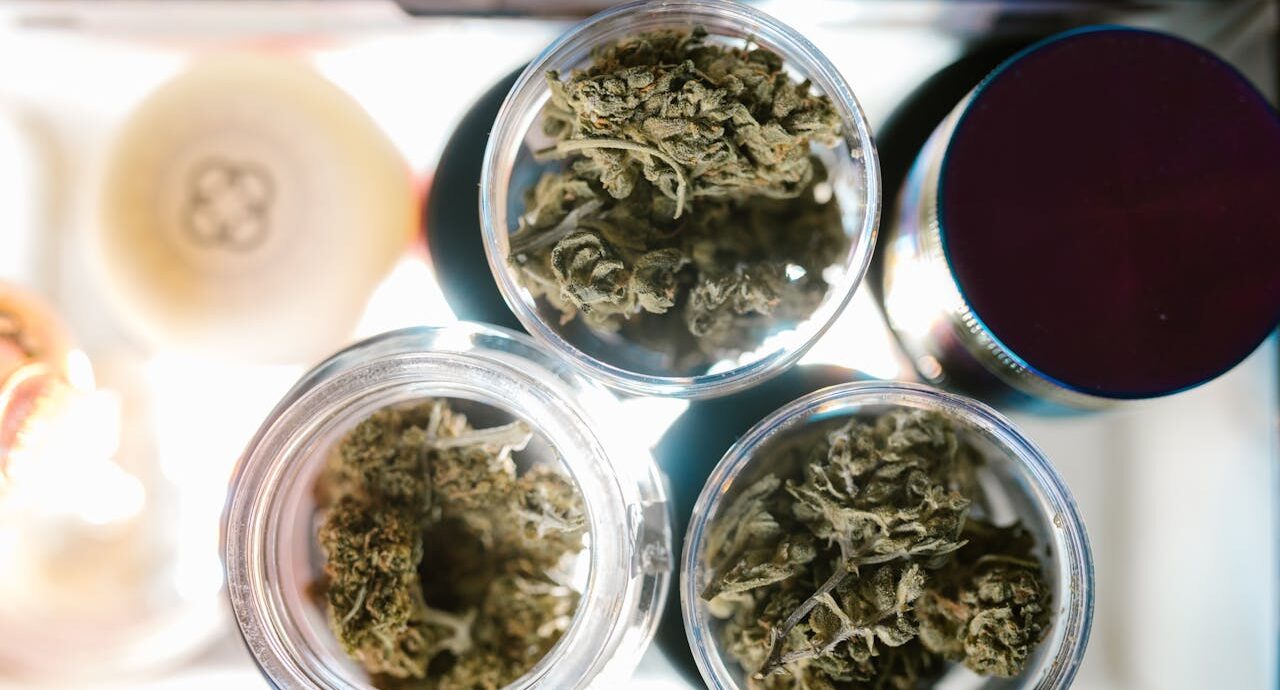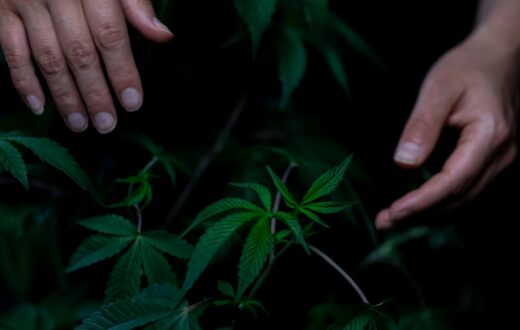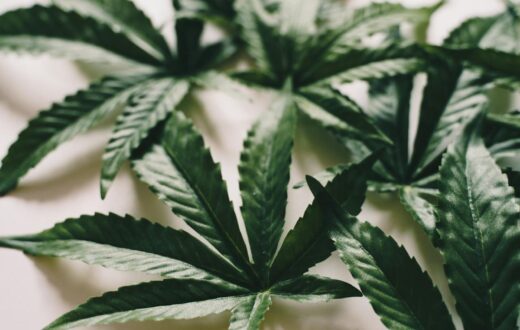Introduction to OG Kush
OG Kush is a renowned cannabis strain that has secured its place in the hearts of cannabis enthusiasts around the world. Its origins are somewhat elusive, with many stories attributing its inception to the early 1990s in California. While the exact lineage remains a topic of discussion, it is commonly believed that OG Kush is a hybrid of the famed Chemdawg and a mysterious strain known as Hindu Kush. This unique genetic combination provides OG Kush with a potent profile that has made it highly sought after.
The strain’s popularity can be attributed to its impressive potency and its distinctive aroma. Cannabis connoisseurs favor OG Kush for its robust THC levels, often reaching upwards of 20%, which offers both a powerful high and profound therapeutic benefits. This strain is distinguished by its complex flavor profile, characterized by earthy undertones paired with notes of pine and citrus. Such sensory attributes not only enhance the overall experience for recreational users but also provide significant relief for those seeking medicinal applications.
OG Kush is widely appreciated among both recreational and medicinal users. For recreational users, the strain provides a euphoric high that is both relaxing and uplifting, making it an ideal choice for unwinding after a long day. On the other hand, medicinal users often turn to OG Kush for its reported ability to alleviate symptoms associated with stress, anxiety, and chronic pain. This dual appeal has contributed to the strain’s prominence within cannabis culture and its frequent inclusion in dispensaries across the globe.
In exploring how to grow OG Kush strain fast, it is essential to understand its attributes, as they heavily influence growth strategies and yield potential. Recognizing the strain’s characteristics will empower growers to optimize their cultivation techniques for thriving plants and abundant harvests.
Understanding the Ideal Growing Conditions
To successfully cultivate the OG Kush strain, understanding its ideal growing conditions is paramount. This strain thrives when specific environmental and soil conditions are meticulously met. First, let us discuss the temperature requirements. OG Kush prefers a controlled environment where daytime temperatures range between 70°F and 80°F (21°C to 27°C). Nighttime temperatures can lower to about 60°F to 70°F (15°C to 21°C). This temperature fluctuation not only supports optimal growth but also enhances the development of aromatic compounds characteristic of the strain.
Humidity levels play a crucial role as well. OG Kush requires around 40% to 60% humidity during its vegetative stage, gradually decreasing to about 30% to 50% during flowering. Proper humidity prevents mold growth while ensuring that the plants do not dry out. When cultivating OG Kush, particularly in indoor setups, utilizing dehumidifiers or humidifiers as appropriate can make a significant difference in maintaining these levels.
Light requirements are another critical factor. For plants grown indoors, providing at least 18 hours of light per day during the vegetative phase will promote robust growth. When transitioning to the flowering stage, reduce the light cycle to 12 hours of light and 12 hours of darkness. If cultivating outdoors, early spring or late summer is the ideal time to plant OG Kush, ensuring sufficient sunlight exposure. It thrives best in areas with long daylight hours that encourage growth and bud formation.
Finally, the soil type is essential for achieving quality yields. OG Kush grows best in well-draining, nutrient-rich soil with a pH level of 6.0 to 7.0. Consider incorporating organic matter, such as compost, which not only improves drainage but also nourishes the plants. By adhering to these optimal conditions, you can learn how to grow OG Kush strain fast and effectively achieve a bountiful harvest.
Choosing the Right Seeds or Clones
When embarking on the journey of how to grow OG Kush strain fast, one of the most crucial decisions involves selecting the right genetic material. This can be either seeds or clones, each with its distinct advantages and disadvantages. Seeds are often regarded as a more traditional choice, allowing for a broader genetic variation. When sourcing seeds, it is significant to choose high-quality options from reputable breeders to ensure the genetic integrity of the OG Kush strain. Many well-established seed banks provide detailed descriptions of their strains, including their growth characteristics and potential yield.
On the other hand, clones offer an immediate replication of a specific plant, guaranteeing that the grower receives the exact genetic traits of that parent plant. This can result in faster cultivation since clones can be rooted and vegetated quicker than seeds. However, not all clones are created equal; it is essential to acquire them from trusted sources. Many local dispensaries or collaborative gardens provide healthy clones that have already demonstrated good health and vigor.
A significant factor to consider is potential genetic variations. While OG Kush seeds could yield different phenotypes, clones will produce plants closely resembling their progenitor. Any slight genetic mutation in seeds may influence growth patterns, flavor profiles, and yields. Therefore, when deciding how to grow OG Kush strain fast, evaluating your preferred growth method and the associated benefits is vital. If uniformity and reliability are objectives, clones may be ideal. In contrast, if you are open to exploring different phenotypes and traits, seeds could provide that opportunity. Ultimately, both options present a pathway to cultivating this iconic strain, and the choice will largely depend on individual preferences and cultivation goals.
Essential Nutrients for OG Kush Growth
Growing the OG Kush strain successfully requires a thorough understanding of its nutritional needs at various stages of development. During the vegetative phase, OG Kush plants thrive on macronutrients, particularly nitrogen (N), phosphorus (P), and potassium (K). Nitrogen promotes robust leaf growth, which is essential for photosynthesis, while phosphorus and potassium contribute to root development and overall plant vigor. A balanced fertilizer designed for the vegetative stage, typically with an N-P-K ratio of 3-1-2, will ensure that your plants receive adequate nutrition.
As the plants transition to the flowering phase, their nutritional requirements shift. The focus should now lean towards promoting blooming and fruiting. This is where phosphorus and potassium become crucial, as they play significant roles in the development of flowers. Utilizing a fertilizer with a higher phosphorus concentration, such as an N-P-K ratio of 1-4-5, is advisable during this phase to encourage robust bud formation and increase overall yield.
Micronutrients and Their Importance
While macronutrients are vital, micronutrients should not be overlooked. Elements such as calcium, magnesium, and iron are essential for the overall health of OG Kush plants. Micronutrients aid in various physiological processes, including photosynthesis and nutrient uptake. To ensure that your plants receive these crucial elements, consider incorporating a micronutrient supplement into your feeding schedule. Products containing chelated iron, for instance, can help prevent deficiencies that might hinder the growth of your OG Kush strain.
In terms of a feeding schedule, it is recommended to feed your OG Kush plants every 1-2 weeks during the vegetative phase, gradually increasing the frequency as they enter the flowering stage. Monitoring the response of your plants is essential, as they may exhibit specific signs indicating nutrient deficiencies or excesses, allowing for adjustments in your approach. Managing the nutrient intake carefully will be instrumental in optimizing the growth and yield of your OG Kush strain.
Effective Pruning and Training Techniques
Mastering the art of pruning and training is crucial for cultivating the OG Kush strain effectively and achieving optimal growth. Among various techniques, topping is one of the most prominent. This method involves cutting off the top of the main stem, promoting two new growth sites to develop. As a result, OG Kush plants grow bushier and yield higher, as the energy is distributed more evenly across multiple branches.
Another essential technique is low-stress training (LST). This method employs gentle bending and tying down of branches to encourage horizontal growth. By doing so, growers can expose more bud sites to light, improving overall plant health and potential yield. LST is particularly beneficial for OG Kush as it naturally tends towards vertical growth, which can limit light penetration to lower nodes. By applying LST, cultivators can ensure even light distribution and enhance airflow within the canopy, reducing the risk of mold and mildew.
The ScrOG (Screen of Green) technique is also highly effective for the OG Kush strain. This method utilizes a screen or mesh to support branches, maximizing light exposure to the lower buds. A ScrOG setup allows the grower to create an even canopy, where all plants receive equal light intensity. This equal distribution not only helps in managing plant height but also increases the density of the flowers produced. For OG Kush, which is known for its dense and potent buds, employing ScrOG can significantly elevate yield and quality.
By integrating these pruning and training techniques, growers can create an ideal environment for their OG Kush plants. This approach not only enhances light exposure and airflow but also ultimately contributes to a more abundant and high-quality harvest, making it crucial for those looking to learn how to grow OG Kush strain fast version.
Pest and Disease Management
Effective pest and disease management is essential for growing the OG Kush strain successfully and ensuring healthy plants. Common pests that can affect OG Kush include aphids, spider mites, thrips, and whiteflies. These pests can weaken plants, reduce yield, and, in some cases, introduce diseases. Additionally, conditions such as powdery mildew and bud rot pose significant threats to cannabis cultivation, particularly in environments with high humidity or poor airflow.
One of the best approaches to manage pests is through Integrated Pest Management (IPM). This strategy emphasizes prevention, monitoring, and control methods that are environmentally sensitive. Start by ensuring that the growing environment is optimal for the OG Kush strain, including maintaining proper humidity levels and ensuring adequate air circulation.
Regularly inspect plants for signs of pests or disease. Early detection can make a significant difference in controlling outbreaks. Implementing companion planting can also help deter pests; for example, planting marigolds or basil alongside OG Kush can keep harmful insects at bay due to their natural repellent properties.
When intervention is necessary, both organic and chemical options are available for treating pests and diseases. Organic solutions, such as neem oil, insecticidal soap, or diatomaceous earth, can be effective in controlling pests without risking the health of the plants or the environment. For instance, neem oil works by disrupting insect life cycles while also providing antifungal properties that can combat diseases.
If considering chemical treatments, choose pesticides specifically formulated for cannabis, and always adhere to recommended application rates and timings to minimize negative impacts. By adopting a balanced, IPM approach, including the use of both organic and chemical options, growers can effectively manage pests and diseases while ensuring the vibrant growth of OG Kush strain plants.
Harvesting at the Right Time
Determining the optimal harvest time for the OG Kush strain is crucial for achieving maximum potency and yield. A key indicator of readiness is the development and coloration of trichomes. Trichomes are the small, hair-like structures found on the surface of the buds, containing the cannabinoids and terpenes that contribute to the strain’s effects and flavor profile. As the plants near their harvest window, observing these trichomes becomes essential.
To assess the maturity of the trichomes, you should use a magnifying glass or jeweler’s loupe to closely inspect them. When the trichomes are clear, it indicates that the plant is not yet ready for harvest. As the plants mature, the trichomes will begin to turn cloudy or milky. This stage signifies that the cannabinoids, particularly THC, are at their peak concentration, making it an ideal time for harvesting the OG Kush strain for potency. If the majority of the trichomes have turned cloudy, and some have started to develop an amber color, it signals that the plant is very close to its optimum harvesting potential.
Additionally, it is important to consider the overall health and vigor of the plants. Harvesting should take place when the leaves start to show signs of yellowing and the buds are dense and well-formed. This will not only help in ensuring a bountiful yield but will also contribute to the overall quality and potency of the final product. Timing is essential; harvesting too early may result in lower potency, while waiting too long can lead to a decline in flavor and therapeutic properties. By carefully monitoring trichome development and assessing the plant’s health, you can effectively determine how to grow OG Kush strain fast and efficiently harvest for optimal results.
Drying and Curing for Maximum Flavor
Once the OG Kush strain has been harvested, the process of drying and curing is essential to preserve its flavor, potency, and aroma. This step cannot be overlooked, as proper techniques significantly enhance the overall quality of the final product. The initial phase, drying, involves removing moisture from the buds, which, if not done appropriately, can lead to mold and diminished flavors.
To begin drying the OG Kush strain, cut the branches with the flowers still attached and hang them upside down in a dark, well-ventilated area. Aim for a climate with low humidity levels—ideally between 45% and 55%—and temperatures around 60°F to 70°F. This environment slows down the drying process, allowing the buds to achieve their full flavor profile without risking taste degradation. Depending on various factors, including humidity and temperature, this initial drying phase may take anywhere from five to twelve days. Signs that drying is complete include stems that snap rather than bend and buds that feel slightly crispy on the outer layer.
Once the OG Kush buds are sufficiently dried, the curing process begins. This involves placing the buds into airtight containers, such as glass jars, to allow for the slow infusion of flavor and aroma. During curing, it is essential to check the containers daily for excess moisture. Opening the jars for a few minutes allows fresh air to circulate, helping prevent any mold formation. The ideal curing period can span from two weeks to several months, with longer curing times often resulting in a more refined and potent product.
In summary, mastering the drying and curing processes is vital for anyone looking to know how to grow OG Kush strain fast while maintaining its desirable characteristics. By paying close attention to the environmental conditions and timelines, growers can significantly enhance the final product, bringing out the best in flavor and potency.
Conclusion and Final Tips
In conclusion, mastering the art of growing the OG Kush strain requires a combination of knowledge, experience, and attention to detail. This fast version of cultivation emphasizes the importance of maintaining optimal conditions, including the right temperature, humidity, and nutrients. To ensure the best outcomes, it is vital to select high-quality seeds, provide adequate lighting, and implement proper watering techniques.
As we explored throughout the article, starting your plants in a controlled indoor environment can lead to faster growth, but transitioning to outdoor cultivation needs careful timing to truly maximize the OG Kush potential. Regular monitoring of plant health cannot be overstated, as these observations help you quickly address any issues that may arise during the growing cycle. Additionally, utilizing appropriate plant training methods, such as topping or low-stress training (LST), can significantly enhance yields and growth rates.
Another critical aspect to consider is pest and disease management. Keeping your growing area clean and regularly inspecting plants will contribute to a healthy garden. For those interested in experimenting, testing different nutrient formulations or varying light schedules can yield interesting insights into how the OG Kush strain responds, allowing you to tailor your approach to personal preferences and desired outcomes.
Ultimately, patience is key when cultivating cannabis, including the OG Kush strain. The growth process may take time, but the rewards are well worth the wait if you remain attentive and committed. Encourage yourself to learn from each growing season, as each attempt will improve your understanding and skills. Embrace the journey and dedicate time to perfecting your technique, because achieving a successful harvest depends on your passion and diligence.













